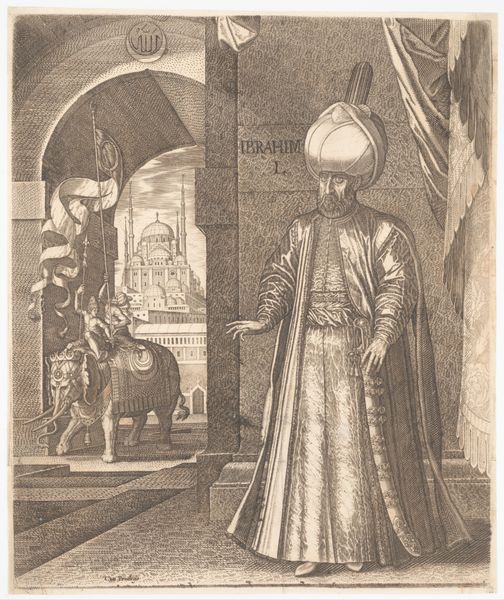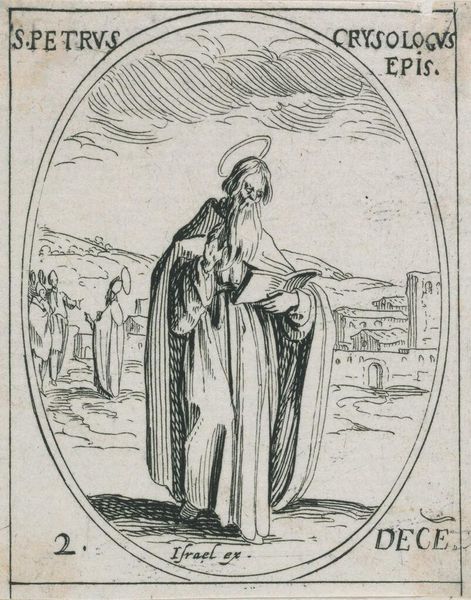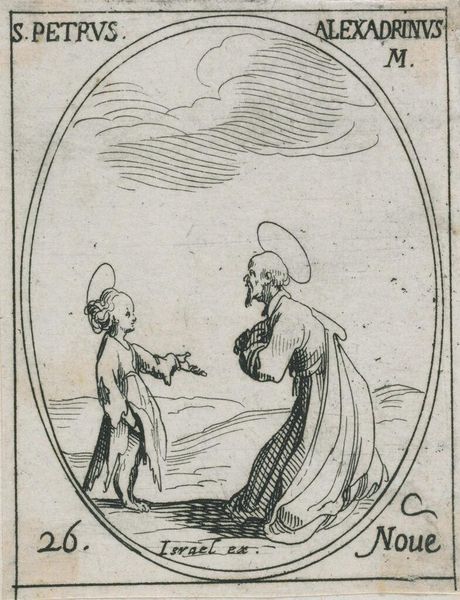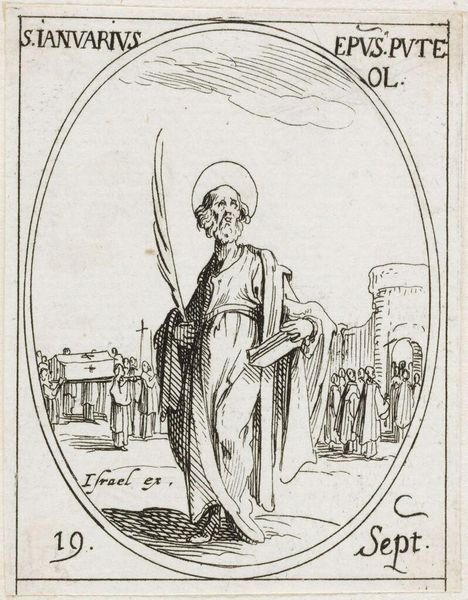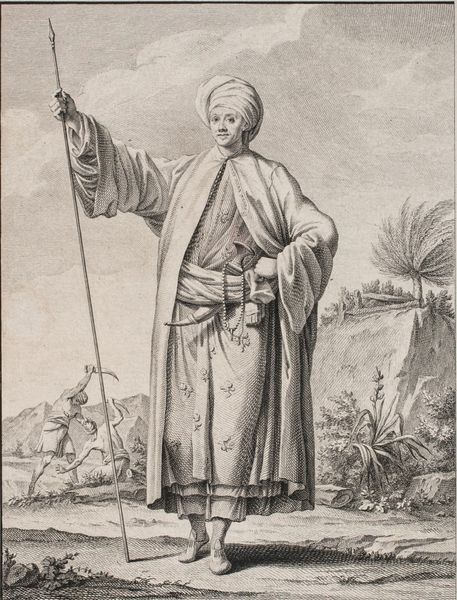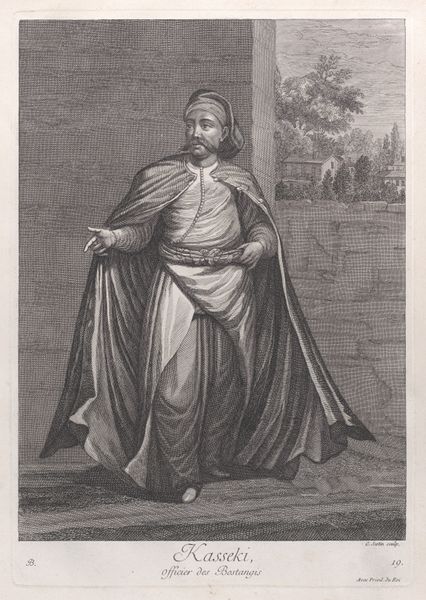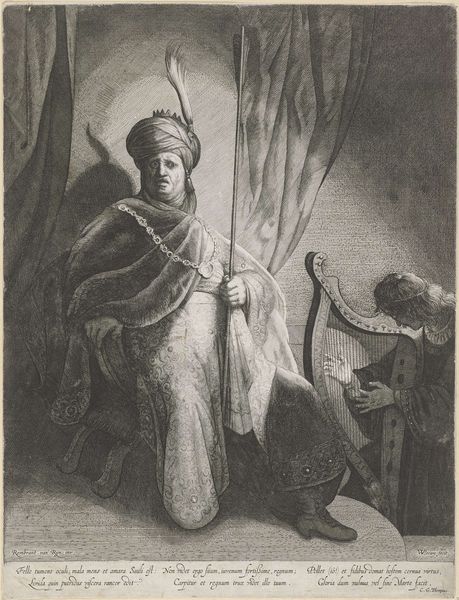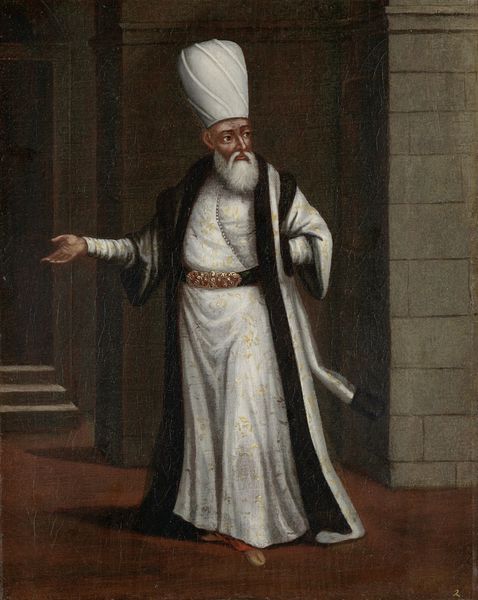
Portrait of Sultan Suleiman the Magnificent (standing) 1574
0:00
0:00
print, engraving
#
portrait
# print
#
islamic-art
#
history-painting
#
engraving
#
realism
Dimensions: 441 mm (height) x 325 mm (width) (bladmaal)
Melchior Lorck’s engraving presents Sultan Suleiman, and through the elephant and the architecture behind him, suggests the great reach of the Ottoman Empire. The elephant motif carries a history laden with symbolism, often associated with royalty, wisdom, and military might. Consider how, in ancient times, elephants were symbols of power in both Eastern and Western cultures, from the war elephants of Hannibal to their revered status in Indian mythology. In this portrait, the elephant serves not only as a display of the Sultan’s wealth and dominion but also echoes the historical continuity of imperial strength. The collective memory of the animal’s significance is subconsciously revived, adding a layer of depth to the artwork. The gesture of Suleiman’s hand, open and slightly raised, conveys authority, yet hints at vulnerability. Such gestures are powerful forces, engaging viewers on a deep, subconscious level, triggering emotional and psychological responses tied to our understanding of power dynamics and human expression. This cyclical progression demonstrates how symbols resurface, evolve, and take on new meanings in different historical contexts.
Comments
No comments
Be the first to comment and join the conversation on the ultimate creative platform.
